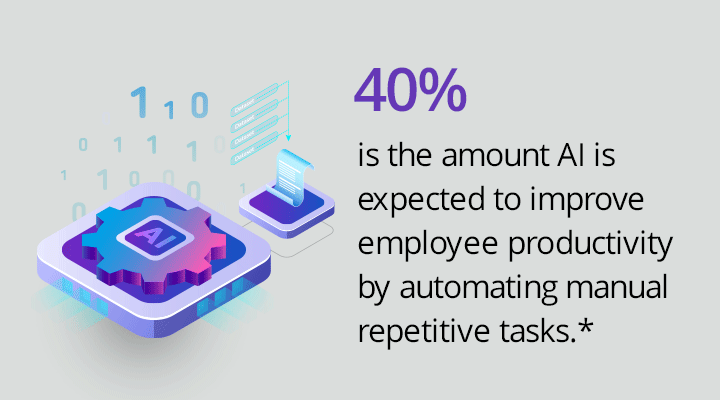The role of AI in detecting financial anomalies and fraud
Generative AI (GenAI) is poised to reinvent financial operations across industries. Most recently, Conduent’s own Senior Director Finance, Accounting and Procurement Offerings, Vik Thakur provided an overview of how GenAI can reshape procurement contract analytics by automating contract analysis with near-perfect accuracy. Beyond just procurement, GenAI has the potential to bring unprecedented efficiency and security to banking and financial transactions. One of its most impactful applications is in fraud detection, where AI-driven solutions are helping institutions detect and prevent fraudulent activities in real-time.
How can AI help with financial fraud detection?
The global cost of fraud has increased to $3.7 trillion per year. Evolving from cutting bad checks to advanced online hacking methods that use artificial intelligence and machine learning to circumvent or brute force their way into sensitive systems and data. Traditional fraud detection methods have historically relied heavily on rule-based systems that often struggled to keep up with the sophisticated fraud tactics of today. GenAI, however, uses machine learning and deep learning techniques to adapt and identify fraudulent patterns effectively –– transforming manual tasks that used to take weeks into taking just a few minutes. GenAI’s ability to analyze vast amounts of data quickly and accurately makes it a powerful tool for identifying financial fraud.
Some types of financial fraud that GenAI can help detect include:
- Identity theft and phishing: GenAI can analyze inconsistencies in login patterns, device fingerprints, and behavioral biometrics to detect identity fraud.
- Forgery: GenAI-powered image recognition can validate signatures and detect forged documents.
- Anomaly detection: GenAI can spot outliers in financial transactions, helping to identify suspicious activities that deviate from normal patterns.
How does AI detect financial anomalies?
Machine learning is at the heart of AI-driven fraud detection. AI models are trained to differentiate between legitimate and fraudulent transactions using two primary learning methods:
- Supervised learning: Traditional AI is trained using labeled datasets of past fraudulent and legitimate transactions, allowing it to recognize familiar fraud patterns.
- Unsupervised learning: GenAI autonomously analyzes transaction data to detect unknown fraud patterns, making it invaluable for identifying new and evolving fraud techniques.
Both traditional AI and GenAI can then detect anomalies by analyzing various transaction elements, including:
- Transaction amount: Sudden, large transactions that deviate from normal spending patterns.
- Frequencies: Repeated small transactions that indicate potential money laundering.
- Recipients and locations: Transactions from unusual locations or to unfamiliar recipients can trigger fraud alerts.
For example, if a customer who typically makes purchases in the U.S. suddenly initiates multiple high-value transactions from an unfamiliar foreign country, AI flags this as a potential fraud attempt.
Benefits of using AI in financial fraud detection
AI offers several advantages in fraud detection, including:
- Enhanced accuracy: AI detects subtle fraud patterns that humans might overlook.
- Real-time detection: AI instantly identifies suspicious transactions, minimizing financial losses.
- Reduced false positives: AI improves detection accuracy, reducing unnecessary transaction blocks and customer frustration.
- Scalability: AI systems can handle vast amounts of transactions, making them ideal for large financial institutions.
- Continuous learning: AI models evolve with new fraud tactics, maintaining effectiveness against emerging threats.
Use cases for AI in financial fraud detection

GenAI opens a new world of possibilities for overcoming complex business challenges for both large enterprises and nimble startups alike. But as more organizations adopt GenAI, several key questions emerge, such as: How does your organization get the most value out of GenAI? How do you mitigate risk and ensure compliance with GenAI? How will your organization measure success? Our recent white paper, Unlocking success with GenAI, will help identify the best use cases to detect fraudulent transactions by analyzing millions of transactions daily and reducing identify theft.
The future of AI in financial fraud detection
AI will only continue to evolve with some models able to compute trillions of parameters at a time. Some ways AI will continue to impact financial operations include natural language processing (NLP), which analyzes emails and chat logs to detect phishing attempts and fraudulent activities. Another way is explainable AI, which ensures transparency in AI decision-making, making fraud detection systems more accountable and unbiased. As AI evolves, it is crucial to develop ethical and transparent AI models that enhance security without compromising user privacy.
Looking ahead
AI is transforming financial fraud detection by enhancing accuracy, real-time detection and scalability. By leveraging AI-powered solutions, financial institutions can stay ahead of fraudulent activities while improving customer trust. As AI technology continues to advance, its role in financial security will become even more critical. For businesses seeking AI-driven fraud detection solutions, Conduent provides cutting-edge technologies tailored to meet the evolving needs of the finance industry. To learn more about how AI can protect your financial operations, visit our Artificial Intelligence Solutions page.
*Source: National University